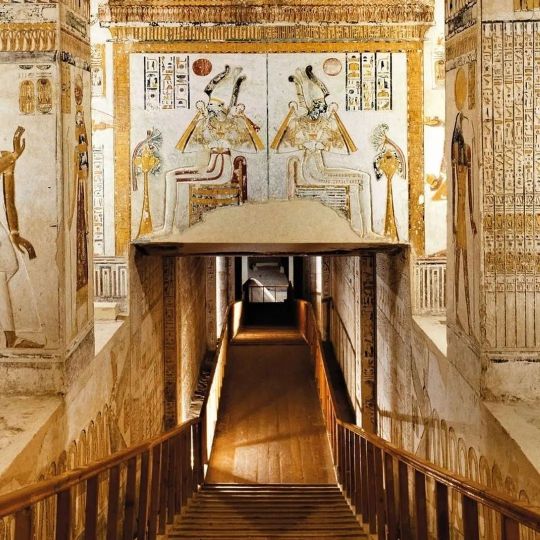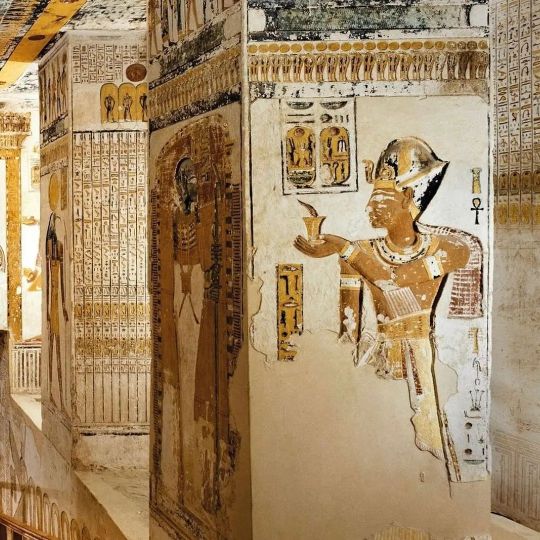#The Tomb of Ramessess VI
Photo



The Tomb of Ramessess VI
Ramesses VI Nebmaatre-Meryamun (sometimes written Ramses or Rameses, also known under his princely name of Amenherkhepshef C) was the fifth ruler of the Twentieth Dynasty of Egypt. He reigned for about eight years in the mid-to-late 12th century BC and was a son of Ramesses III and queen Iset Ta-Hemdjert. As a prince, he was known as Ramesses Amunherkhepeshef and held the titles of royal scribe and cavalry general. He was succeeded by his son, Ramesses VII Itamun, whom he had fathered with queen Nubkhesbed.
After the death of the ruling pharaoh, Ramesses V, who was the son of Ramesses VI's older brother, Ramesses IV, Ramesses VI ascended the throne. In the first two years after his coronation, Ramesses VI stopped frequent raids by Libyan or Egyptian marauders in Upper Egypt and buried his predecessor in what is now an unknown tomb of the Theban necropolis. Ramesses VI usurped KV9, a tomb in the Valley of the Kings planned by and for Ramesses V, and had it enlarged and redecorated for himself. The craftsmen's huts near the entrance of KV9 covered up the entrance to Tutankhamun's tomb, saving it from a wave of tomb robberies that occurred within 20 years of Ramesses VI's death. Ramesses VI may have planned and made six more tombs in the Valley of the Queens, none which are known today.
Egypt lost control of its last strongholds in Canaan around the time of Ramesses VI's reign. Though Egyptian occupation in Nubia continued, the loss of the Asiatic territories strained Egypt's weakening economy and increased prices. With construction projects increasingly hard to fund, Ramesses VI usurped the monuments of his forefathers by engraving his cartouches over theirs. Yet he boasted of having "[covered] all the land with great monuments in my name [...] built in honour of my fathers the gods". He was fond of cult statues of himself; more are known to portray him than any Twentieth-Dynasty king after Ramesses III. The Egyptologist Amin Amer characterises Ramesses VI as "a king who wished to pose as a great pharaoh in an age of unrest and decline".
The pharaoh's power waned in Upper Egypt during Ramesses VI's rule. Though his daughter Iset was named God's Wife of Amun, the high-priest of Amun, Ramessesnakht, turned Thebes into Egypt's religious capital and a second center of power on par with Pi-Ramesses in Lower Egypt, where the pharaoh resided. In spite of these developments, there is no evidence that Ramessesnakht's dynasty worked against royal interests, which suggests that the Ramesside kings may have approved of these evolutions. Ramesses VI died in his forties, in his eighth or ninth year of rule. His mummy lay untouched in his tomb for fewer than 20 years before pillagers damaged it. The body was moved to KV35 during the reign of Pinedjem I, and was discovered in 1898 by victor Loret.
#The Tomb of Ramessess VI#Twentieth Dynasty of Egypt#Valley of the Kings#pharaoh#ruler#history#history news#ancient historuy#ancient civilizations#ancient egypt#grave#ancient grave#art#artist#art work#afterlife#paintings#drawings#hieroglyphs#egyptian hieroglyphs
159 notes
·
View notes